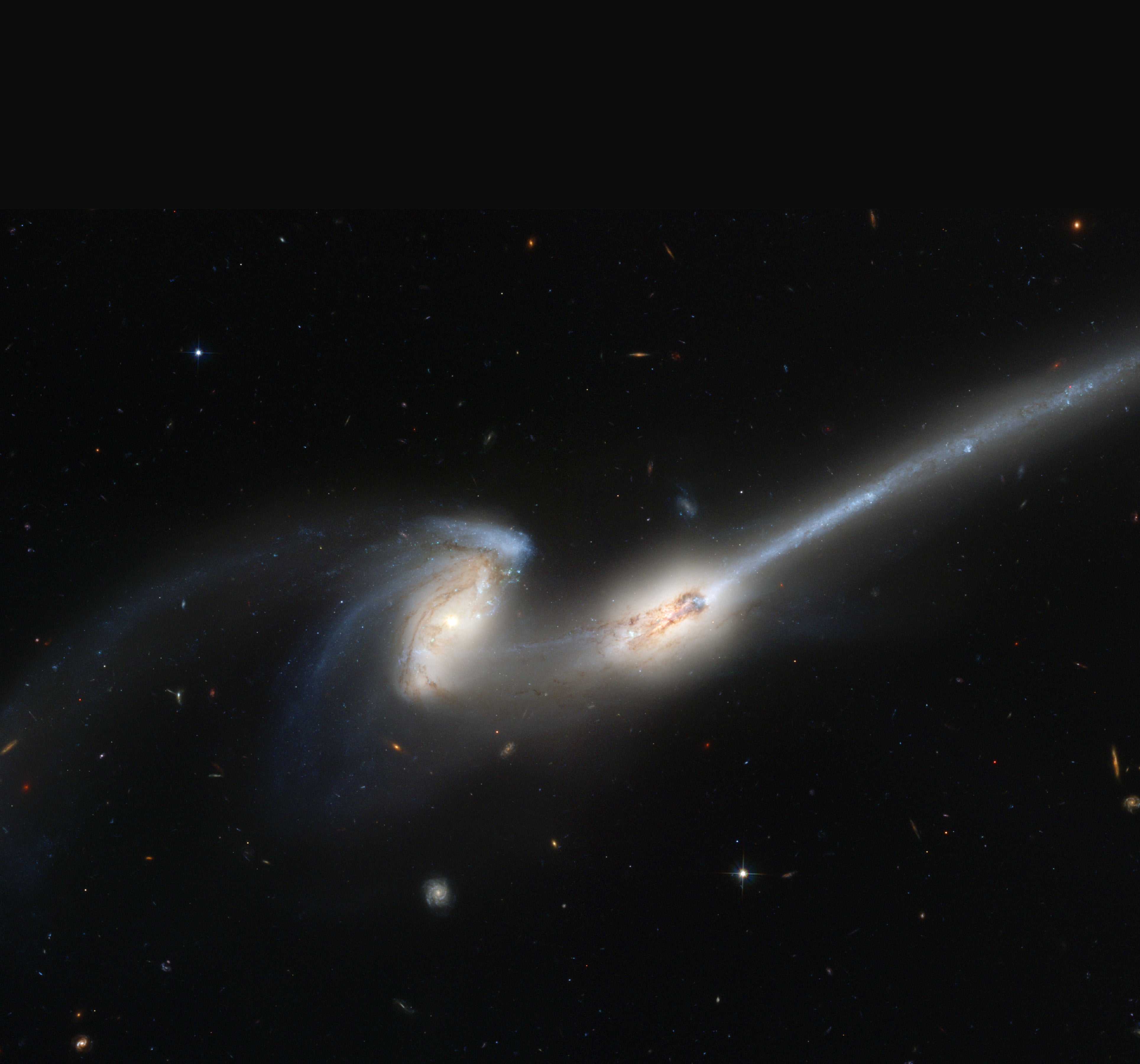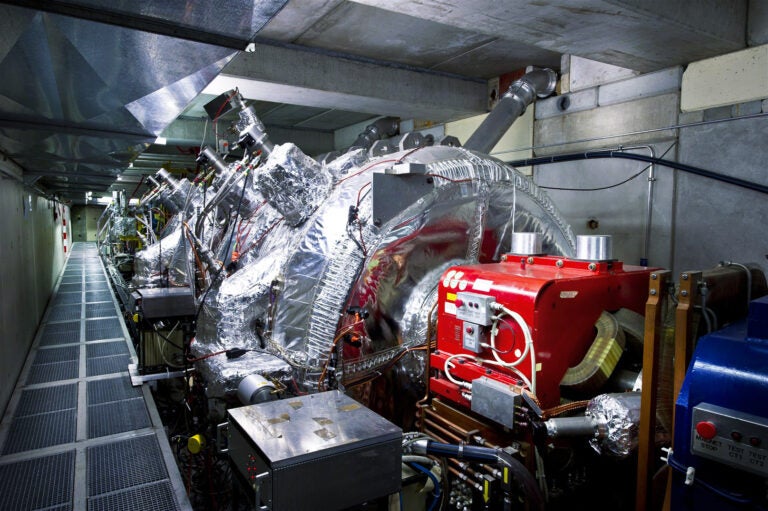
The Mice Galaxies (NGC 4676 A and B; also cataloged as Arp 242) are a close-knit pair of roughly 14th-magnitude spiral galaxies engaged in a tidal embrace. Their name refers to their two tremendously long tails of stars and gas, one extending from each body.
Structures formed by clumps of stars separated by expanses of dim matter in the longer of the two tails have led astronomers to believe that the two galaxies already passed through one another hundreds of millions of years ago. Computer simulations have confirmed this scenario and suggest we are now seeing the Mice approximately 160 million years after that event. As they are still tidally attracted to one another, they will likely repeat their slow-motion dance, passing through one another multiple times over the next billion years until they coalesce to form a single elliptical galaxy.
Chandra X-ray Observatory images have detected strong starburst-driven winds from the minor axis of each galaxy. This finding is totally unexpected in such a rapidly evolving and turbulent merger; it is, in fact, the first time that such a hot gaseous outflow has ever been seen in a full-blown merger.
The galaxies lie some 290 million light-years distant in the Coma Galaxy Cluster (see #86). You’ll find them about 4.8° east-northeast of Gamma (γ) Comae Berenices and 1.5° south-southeast of the magnificent magnitude 10.5 barred spiral galaxy NGC 4656, popularly known as the Hockey Stick Galaxy.
Larry Mitchell of Houston showed me the Mice through his 24-inch telescope at the 1986 Texas Star Party, but it wasn’t until the 1999 Texas Star Party — after gaining experience with deep-sky observing — that I was able to detect the tails through the same instrument. How small of a telescope can you use to detect the Mice and their tails?









